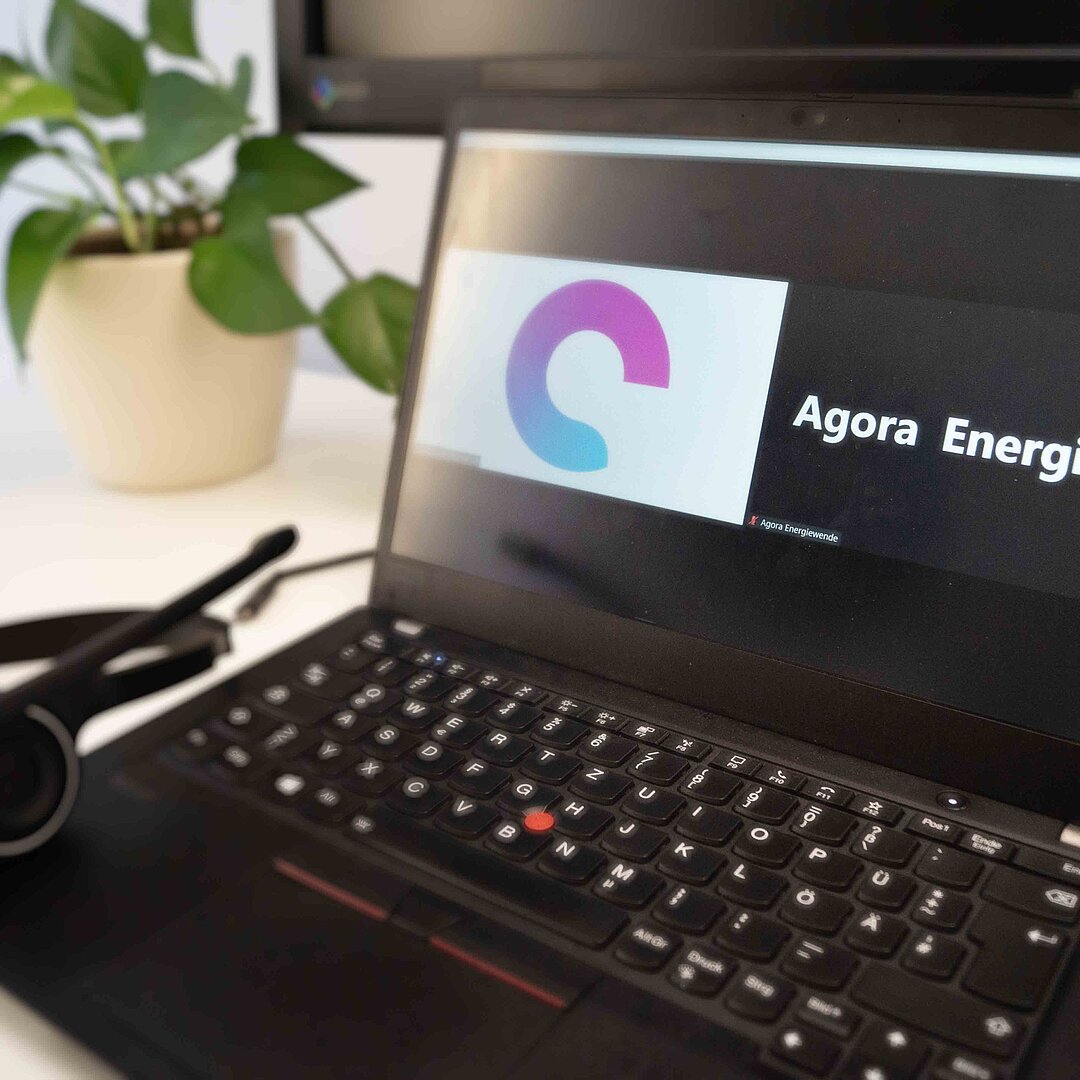Europe can accelerate fossil gas phase-out with less hydrogen than planned
Through structural fossil gas demand reductions in the buildings, industry and power sectors, the EU can strengthen its energy security and cut emissions by 60% by 2030 and 89% by 2040. Such an approach, supported by a strong policy mix, would reduce renewable hydrogen demand until 2030 by 80% compared to the REPowerEU target.

Brussels, 4 May 2023. Europe can halve its fossil gas use by 2030 and completely phase it out of the energy system by 2050 while ensuring security of supply, a new report by energy and climate think tank Agora Energiewende finds.
Agora’s EU Gas Exit Pathway shows that the phase-out is possible based on structural fossil gas demand reductions without disruptive behavioural changes and while maintaining industrial production at today’s levels.
Key measures to reduce fossil gas demand include quickly ramping up renewable energy to reach 70% of power generation by 2030 and 85% by 2040, improving energy efficiency and electrifying process heat in the industry sector, insulating buildings as well as installing 40 million heat pumps by 2030 and 80 million by 2040.
Matthias Buck, Director Europe at Agora Energiewende said:
“Europe’s legally binding climate neutrality target means no fossil fuels – including gas – in the energy system latest by mid-century. To get there, we need a smart mix of policy measures and financing instruments which will accelerate the needed home renovations, the efficiency improvements in industry and the deployment of solar and wind to power our societies.”
The power sector reduces fossil gas use the fastest
In Agora’s EU Gas Exit Pathway, the energy sector, in particular the power sector, reduces its fossil gas consumption the fastest, driven by the rapid scaling of solar and wind power. Deep geothermal and large-scale heat pumps also play a crucial role as an alternative to fossil gas in district heating networks, delivering roughly a quarter of district heat production by 2030 and half by 2040.
In the industry sector, the sub-sectors for chemicals, iron and steel, and machinery and transport equipment could produce without fossil gas by 2040. The fossil-gas reductions in industry will initially mostly be driven by increased energy efficiency and direct electrification and will later be complemented by renewables-based hydrogen and bioenergy with carbon capture and storage (BECCS).
Energy efficiency, heat pumps and decarbonised district heating are key levers for achieving a nearly fossil gas-free building stock by 2040. The transition will require robust policies, such as ambitious minimum energy performance standards, that deliver green investments and prevent the lock-in of fossil fuel equipment in buildings.
Matthias Buck:
“Our scenario shows a rapid decline in gas demand across sectors. To avoid stranded assets, governments and regulators need to thoroughly evaluate the impact of this decline, especially with regards to gas distribution grids and liquified natural gas supply infrastructure.”
The EU’s short-term targets for renewable hydrogen consumption should be revised
The EU Gas Exit Pathway significantly differs from the EU’s strategy to wean Europe off Russian fossil gas (REPowerEU) on the scale of renewable hydrogen production and demand in the short term.
REPowerEU foresees consumption of 666 TWh (20 Mt) renewables-based hydrogen and its derivatives to replace Russian fossil gas in Europe by 2030. The EU Gas Exit Pathway suggests that a consumption of 116 TWh by 2030 would be cost optimal, favouring direct electrification over more costly indirect electrification relying on hydrogen. The EU Gas Exit Pathway hydrogen demand is consistent with the recently agreed hydrogen targets in the EU’s revised renewable energy law.
After 2030, the demand in the EU Gas Exit Pathway rises and reaches 570 TWh for renewable hydrogen and 95 TWh for hydrogen derivatives in 2040 and respectively 950 TWh and 900 TWh in 2050. Fossil gas-based hydrogen is almost completely phased out by 2035.
Matthias Buck:
“Europe will need a lot of renewable hydrogen to become climate neutral, but mostly after 2030. Our analysis shows that it’s much more cost-effective to prioritise direct use of renewable electricity when replacing fossil fuels - especially in the transport and the buildings sectors.”
“The EU should thus revisit the REPowerEU hydrogen target, and also factor in the potentially much lower demand when discussing the ramp-up of electrolysers as part of the Net-Zero Industry Act,” Buck added.
The EU Gas Exit pathway also points to the need of revisiting the “hydrogen and decarbonised gas market package” that was proposed by the European Commission before the escalation of Russia’s war on Ukraine. Agora proposes that at a minimum, the Commission should carry out a new impact assessment of the proposed rules which reflects the drastically changed economic and political context.
An accelerated gas phase-out means that a 2040 emissions reduction target of 90% is feasible
The EU is currently starting the debate on its 2040 climate target as foreseen in the EU Climate Law. A proposal from the European Commission is expected before the European Parliament elections in 2024 and possibly already by the time of COP28 in November 2023.
The EU Gas Exit Pathway shows that Europe can reduce emissions by 60% by 2030 and 89% by 2040, which is more than existing Commission modelling suggests. This means that the EU should aim for a 2040 emissions reduction target of around 90%.
EU funding is needed to cover a part of the investment needs
The EU Gas Exit pathway presupposes investment in buildings, industry, and energy supply - excluding grid investments - of around 225 billion euros per year in the current decade, increasing to 285 billion euros per year between 2031 and 2050. This represents roughly an annual 1.6% of the EU GDP through 2050.
Agora estimates that of the total investment needs up until 2030, 669 billion euros or around 30%, should be covered by the public sector either as direct public investment or grants. The EU’s multiannual budget, funding through the economic recovery budget “Next Generation EU” and REPowerEU as well as revenues from the EU carbon market make available a cumulative 295 to 360 billion euros for green investment in the same period, depending on the carbon price over the next years.
However, under current agreements, funding from Next Generation EU and REPowerEU will end in 2026, and without complementary EU funds, national governments will need to contribute significantly higher shares from national budgets.
“EU governments should urgently evaluate the impact of the declining gas demand and assess the corresponding investment needs as they update their national energy and climate plans this year. Given the uneven financial capacity of member states, transparent and accessible EU-level support for future-proof investments will be needed also when funding from Next Generation EU and REPowerEU ends. The announced EU sovereignty fund should play a key role here – and needs to be set up to support such investments,” Buck concluded.
The study entitled „Breaking free from fossil gas: A new path to a climate-neutral Europe“ was written by Agora Energiewende. The 86-page publication lays out a detailed EU Gas Exit Pathway, developed by Artelys, TEP Energy and Wuppertal Institute, for the EU-27 in the energy, buildings, and industry sector.
The publication is available for free download below.










